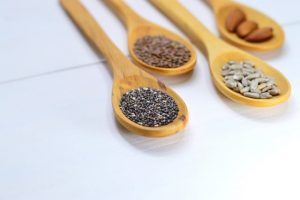- Prioritize essential vegetables and herbs to reduce waste and maximize value in your garden.
- Choose open-pollinated and heirloom seeds for long-term savings and diverse flavors.
- Utilize DIY solutions for soil and fertilizers to save money while promoting healthy growth.
- Get creative with repurposed items for garden structures and containers, minimizing expenses.
- Implement water-wise gardening techniques and plan for long-term savings to cultivate a budget-friendly garden.
As spring rolls around, many home gardeners eagerly anticipate the chance to dig into the soil and cultivate their green spaces. However, amidst the excitement, it’s crucial to be mindful of budgeting constraints. Gardening can become an expensive hobby if not approached with careful planning. Fortunately, with a bit of foresight and creativity, it’s possible to create a vibrant garden without breaking the bank. This article will explore some budgeting tips tailored specifically for home gardeners gearing up for the spring season.
Start with Smart Seed Selection
Choosing the right seeds is the foundation of any successful garden, and it’s also where you can make significant savings. Here are some tips to help you make the most of your seed budget:
Prioritize Essential Vegetables and Herbs
When selecting seeds, focus on vegetables and herbs that you frequently use in your cooking. By prioritizing essentials like tomatoes, lettuce, basil, and parsley, you ensure that your garden yields produce that you’ll actually use, reducing waste and maximizing value.
Opt for Open-Pollinated and Heirloom Varieties
Open-pollinated and heirloom seeds not only offer diversity and flavor but also come with the added benefit of being more cost-effective in the long run. Unlike hybrid seeds, which need to be purchased annually, open-pollinated and heirloom varieties allow you to save seeds from year to year, cutting down on future expenses.
Embrace DIY Solutions for Soil and Fertilizers
Healthy soil is the cornerstone of a thriving garden, but you don’t need to spend a fortune on commercial soil mixes and fertilizers. Consider these budget-friendly alternatives:
Compost Kitchen Scraps and Yard Waste

Composting is not only environmentally friendly but also a fantastic way to enrich your soil for free. Start a compost bin in your backyard and toss in kitchen scraps, yard waste, and other organic materials. Over time, you’ll produce nutrient-rich compost that can be used to feed your plants.
Make Your Own Organic Fertilizers
Instead of splurging on expensive fertilizers, explore DIY options using household ingredients like eggshells, coffee grounds, and banana peels. These natural amendments provide essential nutrients to your soil, promoting healthy growth without the hefty price tag.
Get Creative with Garden Structures and Containers
Elevate your garden aesthetics without draining your bank account by incorporating these budget-friendly ideas for garden structures and containers:
Repurpose Household Items
Look around your home for items that can be repurposed into garden structures or containers. Old wooden crates, buckets, and even discarded furniture can be transformed into charming planters with a bit of creativity and a coat of paint.
Build Simple DIY Structures
Rather than splurging on store-bought trellises and raised beds, consider building your own using affordable materials like wooden stakes, chicken wire, and reclaimed lumber. There are plenty of online tutorials and plans available to guide you through the process, allowing you to customize your garden structures while staying within budget.
Practice Water-Wise Gardening Techniques
Conserving water not only benefits the environment but also helps you save on utility bills. Here are some water-wise gardening techniques to implement in your spring garden:
Mulch Beds to Retain Moisture
Applying a layer of mulch around your plants helps retain soil moisture, reducing the need for frequent watering. Use organic mulches like shredded leaves, straw, or grass clippings, which enrich the soil as they decompose and aid in conserving water.
Collect Rainwater for Irrigation
Invest in a rain barrel or DIY a rainwater collection system to harness nature’s free irrigation supply. Collecting rainwater not only reduces your reliance on municipal water but also provides plants with chlorine-free hydration, promoting healthier growth.
Plan for Long-Term Savings
While it’s essential to budget for immediate gardening expenses, thinking ahead can lead to significant long-term savings. Consider these strategies for maximizing your garden budget over time:
Save Seeds for Future Planting

As your garden matures, allow some plants to go to seed, collecting and storing them for future planting seasons. This practice not only saves money on seed purchases but also promotes biodiversity and adaptation to your specific growing conditions. You can also consider buying bulk flower seeds on sale so you won’t have to purchase more later.
Invest in Perennial Plants

Incorporating perennial plants into your garden layout offers a cost-effective way to enjoy blooms and harvests year after year. While perennial plants may require a higher initial investment than annuals, their longevity and ability to multiply over time make them a savvy budget choice.
With a bit of strategic planning and resourcefulness, home gardeners can cultivate flourishing gardens without straining their budgets. By prioritizing essential seeds, embracing DIY solutions for soil and fertilizers, getting creative with garden structures and containers, practicing water-wise techniques, and planning for long-term savings, you can enjoy a bountiful harvest without breaking the bank. Remember, gardening is not just about nurturing plants; it’s also about nurturing your financial well-being and fostering a deeper connection to the natural world. So, roll up your sleeves, dig into the soil, and let your budget-friendly garden flourish this spring.